Lack of more than 6,400 classrooms in disadvantaged areas: An unsolved problem
The shortage of schools and classes has been happening in many localities today. This has significantly affected the implementation of the 2018 General Education Program and made it difficult to ensure equitable access to education for all students.
Recently, Mr. Tran Thanh Dam, Director of the Planning and Finance Department, said that the country currently has 618,284 classrooms at public preschool and general education levels. Of which, the number of solid classrooms is 554,142, reaching a solidification rate of 89.6%. Particularly at the primary level, the rate of solid classrooms increased from 78.2% in 2015 to 87.1% in 2025. In addition, the system of libraries, subject rooms, teachers' offices, cafeterias, boarding areas, toilets, clean water... have also received investment attention.
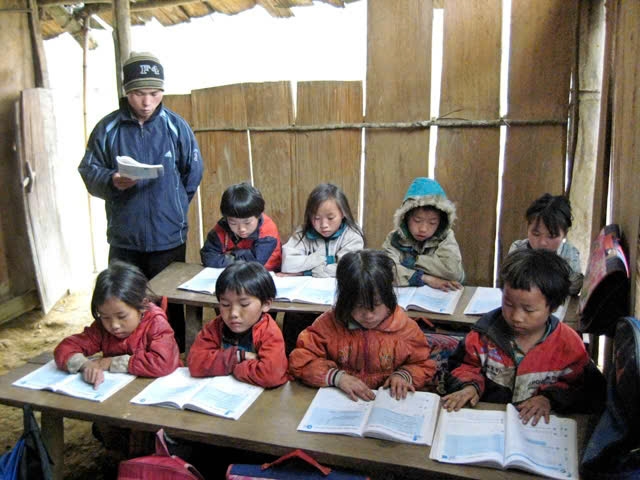
In areas with particularly difficult economic conditions, there still exist up to 6,477 borrowed classrooms, mostly at preschool and primary levels.
However, the shortage of classrooms still occurs locally in many localities, especially in urban areas with high population growth rates as well as remote, isolated and extremely disadvantaged areas. Many mountainous provinces such as Dak Nong , Dien Bien, Cao Bang, Lai Chau... have a rate of unconsolidated classrooms at preschool and primary levels of up to 40%.
Specifically, according to reports from localities, preschool education is currently lacking about 27,953 classrooms and primary education is lacking about 7,491 classrooms to achieve the target of 1 class/room, meeting the requirement of studying 2 sessions/day. Notably, these figures do not take into account the need to ensure the number of students/class in accordance with current regulations.
In particular, in areas with particularly difficult economic conditions, there still exist up to 6,477 borrowed classrooms, mostly at preschool and primary levels - levels with young students who need special care.
Director of the Hanoi Department of Education and Training - Mr. Tran The Cuong said that in the 2024 - 2025 school year, the city has built 43 new schools to solve the problem of school overload in some areas. Meanwhile, Ho Chi Minh City - where there are more than 2.6 million students - has been divided into 16 professional clusters according to each ward and commune to facilitate guidance and professional activities. The city also aims to build 300 classrooms per 10,000 school-age population, contributing to reducing class sizes and improving teaching quality.
Teachers in disadvantaged areas juggle between schools
Regarding the 248 schools that need to be built in border communes, Minister of Education and Training Nguyen Kim Son emphasized that this is an urgent political task, requiring synchronous coordination between localities and active participation from the Departments of Education and Training. Boarding schools in this area need to be built reasonably, close to each other, ensuring learning conditions for ethnic minority students.
The lack of classrooms is also the reason why many small schools in economically disadvantaged areas have to operate in poor conditions: desks and chairs do not meet standards, electricity is not guaranteed, and teaching equipment is extremely lacking. Teachers are forced to move between schools, and students are disadvantaged when they cannot fully participate in learning, skills, and extracurricular activities.
Mr. Vu Van Tung, Dinh Nup Primary and Secondary School (Po To Commune, Ia Pa District, Gia Lai Province) said that the school where he works currently has 14 classes, but only about 6-7 classes can be arranged at the main school. The remaining classes are still forced to maintain at 2 separate locations, 1-2km away from the main school. These are temporary school locations that were previously kept because they did not have enough conditions to build a central school.
“The facilities at the remote locations are still very poor. The desks and chairs are not up to standard, the writing boards are degraded, the electricity is available but unstable, the lighting is only enough, teaching equipment such as projectors cannot be moved to the remote locations because of safety concerns. Organizing professional activities or extracurricular activities is almost impossible at the remote locations. Students are isolated, and if brought back to the main location, they face danger when traveling on steep mountain passes,” said Mr. Tung.
What teachers and students most desire is to have stable and synchronous infrastructure investment at a centralized school. “Only then can teachers feel secure in teaching and students can fully study according to the requirements of the new program,” Mr. Tung shared.
To achieve the goal of 100% of classrooms being solidified by 2030 as stated in Conclusion 91-KL/TW of the Politburo, Minister Nguyen Kim Son emphasized the leading role of the State in investment, while promoting the mobilization of social resources and implementing reasonable and effective socialization. The Ministry of Education and Training also clearly identified that in the next stages, the solidification of schools will be prioritized in ethnic minority areas, remote areas, and disadvantaged areas, in order to ensure fairness in access to education for all students.
The shortage of nearly 35,000 classrooms, of which more than 6,400 classrooms still have to be borrowed, is an alarming situation before the new school year. Remote areas continue to be the places that suffer the most disadvantages in terms of learning conditions. If not resolved drastically, the "bottleneck" of facilities will hinder all efforts to reform education. To solve this problem, a vision, long-term planning, financial resources, and land resources are needed.
Source: https://baolaocai.vn/thieu-gan-35000-phong-hoc-nut-that-co-so-vat-chat-truoc-nam-hoc-moi-post879265.html





![[Photo] Binh Trieu 1 Bridge has been completed, raised by 1.1m, and will open to traffic at the end of November.](https://vphoto.vietnam.vn/thumb/1200x675/vietnam/resource/IMAGE/2025/10/2/a6549e2a3b5848a1ba76a1ded6141fae)


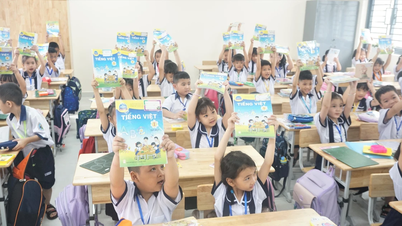



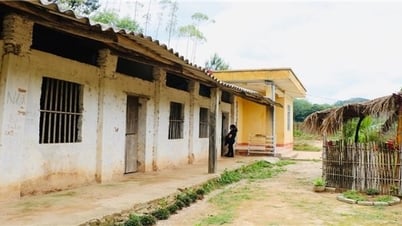







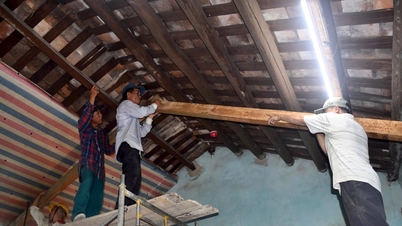








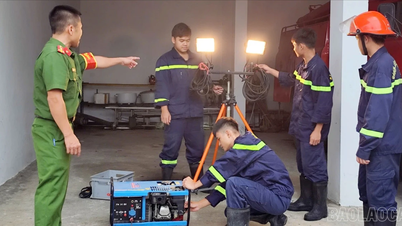
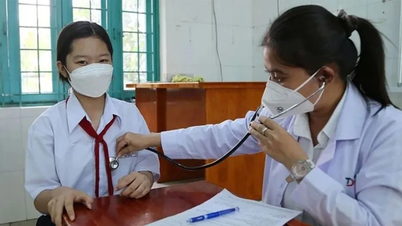





























































Comment (0)